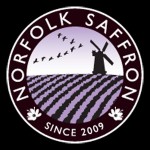|
Norfolk Saffron and the Environment
Norfolk Saffron’s HQ is set in the heart of the Norfolk Coast Area of Outstanding Natural Beauty, on the edge of marshland of national conservation importance. It’s a privilege to see barn owls, hares, marsh harriers and other rare species regularly, so protecting our wonderful environment is extremely important to us.
Our smallholding is too small to enter into Countryside Stewardship Schemes like SFI (or to be in receipt of farm subsidies) but that doesn’t stop us from doing our bit.
We don’t use herbicides, fungicides or pesticides on our saffron. We look after our soil carefully, building up and maintaining fertility whilst preventing compaction and erosion. The saffron is grown in crop rotation, which makes it sustainable.
Spring 2013 saw us secure a grant from the local Sustainable Development Fund for buying seed-sowing equipment. Alongside the saffron, we are growing ‘pollen & nectar mixes’ to help bumblebees and other insects. In addition, our smallholding is home to rare plants like bee orchids, night-flowering catchfly and a blue form of scarlet pimpernel.
In 2015 we had the first of our hedges professionally laid. This not only supports a traditional skill and another rural business, but it will make the hedge thicker and more long-lived, with all the new re-growth coming from the base. Every time you buy Norfolk Saffron, you’re contributing to the ongoing costs of our conservation work.
When it comes to packaging Norfolk Saffron, we aim to be as green as possible. We use recyclable glass jars rather than the usual plastic boxes. Since autumn 2012 all our orders have used a biodegradable “void packing” rather than bubblewrap or foam chips. We swapped brown plastic parcel tape for a biodegradable paper alternative years ago.
In 2015, Norfolk Saffron was selected as one of East Anglia’s greenest businesses, being one of the Green100 scheme.
An exciting new development from 2017 is that we have started making deliveries of saffron by sail using traditional East Anglian wooden vessels – a truly carbon neutral means of shipping orders. So far cargoes have been sent on the 1950s whelker Salford with Henry Chamberlain of the Coastal Exploration Company, and on the 1921 Lowestoft fishing smack Excelsior with the Coriolis Trading Company. We can even walk from our smallholding to a nearby tidal creek and rendezvous with a sailing boat!
In early 2023 we secured a grant from the Farming in a Protected Landscape scheme which helped fund equipment to manage various non-saffron aspects of our smallholding. This new equipment makes it easier and safer to maintain and prune our hedges, timber trees, pollards and orchards, as well as look after our pollen & nectar mixes and grassland.
|

